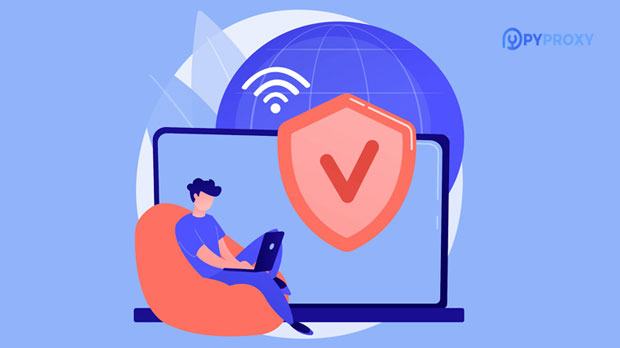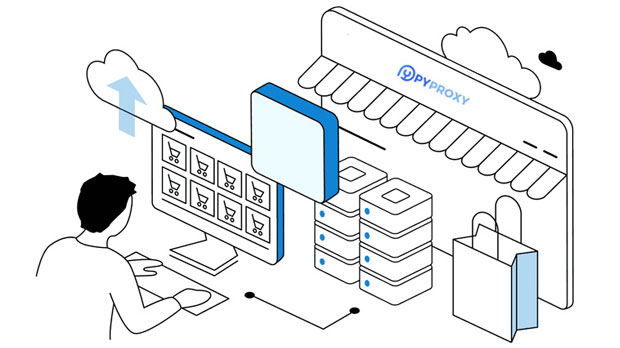Obtaining socks5 proxy IPs in various countries is a crucial step for users seeking to mask their online identity, bypass geographic restrictions, or ensure privacy. socks5 proxies provide better security and performance than standard HTTP proxies, making them a popular choice for internet users, businesses, and marketers. However, acquiring these proxies varies by country, and understanding the local regulations, available services, and technical requirements is vital. In this article, we will explore the methods and considerations involved in obtaining Socks5 proxy IPs from different countries, providing a comprehensive guide for those looking to enhance their online privacy and security. What is a Socks5 Proxy and Why Do You Need It?A Socks5 proxy is a type of proxy server that facilitates routing network traffic between a client and a server while providing enhanced privacy and security. Unlike HTTP or HTTPS proxies, which only handle specific types of traffic (e.g., web browsing), Socks5 proxies are versatile, supporting various protocols such as HTTP, FTP, and more. This versatility makes them ideal for users who need to anonymize their entire internet connection, including activities like torrenting, video streaming, or gaming.The primary reason to use a Socks5 proxy is to mask your real IP address, which enhances privacy and security online. It can also help bypass geographical restrictions placed by websites or services. For example, if you are located in a region with restricted access to certain online content, you can use a Socks5 proxy from a country where those restrictions do not exist. This opens up new opportunities for internet users and businesses alike.Understanding Country-Specific Requirements for Socks5 ProxiesWhen acquiring Socks5 proxy IPs from different countries, there are several factors to consider. Each country has its own internet regulations, available infrastructure, and regional limitations that can impact the effectiveness and legality of using proxies. Let’s explore the key elements to be aware of when obtaining Socks5 proxy IPs:1. Local Internet Regulations and LawsBefore using Socks5 proxies from any country, it is important to understand the local internet regulations. Some countries have strict policies regarding internet usage, data privacy, and the use of proxies. For example, some governments may restrict or monitor the use of proxies to prevent illegal activities, such as bypassing censorship or conducting illicit online transactions.In certain countries, using proxies might be entirely legal, while in others, you may face penalties or legal consequences for attempting to hide your IP address. Researching the legal framework in each country is essential to avoid any potential legal trouble. Consulting local legal experts or resources can provide valuable insights.2. Availability of Socks5 Proxy Providers in Different CountriesThe availability of Socks5 proxy services can vary significantly by country. Developed nations with robust internet infrastructures, like the United States, Germany, or Japan, typically offer a wide selection of proxy servers, including Socks5 proxies. These countries have established data centers that provide stable and high-performance proxy services. However, in countries with limited internet infrastructure, such as some developing nations, Socks5 proxies might be harder to find or offer lower-quality performance.In addition to availability, the speed and reliability of Socks5 proxies depend heavily on the provider’s infrastructure and the country’s internet backbone. Proxies sourced from countries with advanced networks tend to be faster and more reliable compared to those from countries with less robust internet infrastructure.3. Choosing the Right Country for Your NeedsWhen selecting a country to obtain Socks5 proxies, it’s crucial to consider your specific needs. Different countries offer distinct advantages based on your intended use. For example:- Privacy: Countries with strong data protection laws, such as Switzerland or Norway, are ideal for those seeking anonymity and privacy. These nations have stringent regulations regarding data storage and surveillance, making them preferable choices for users concerned about data privacy. - Bypassing Geo-Restrictions: If your goal is to access content restricted to specific regions, such as streaming services or websites, it’s important to choose a country where the content is available. For instance, obtaining a Socks5 proxy from the United States might be beneficial for accessing US-based streaming platforms.- Speed and Reliability: If performance is a priority, choose a country with advanced internet infrastructure, such as the United States, Japan, or Germany. These countries typically offer faster and more stable connections.Understanding your primary goal will help guide your decision in choosing the right country for obtaining Socks5 proxy IPs.4. Methods to Obtain Socks5 Proxy IPsThere are multiple ways to acquire Socks5 proxy IPs from various countries. The most common methods include:4.1. Subscription-Based Proxy ProvidersMany proxy service providers offer Socks5 proxies as part of their subscription packages. These providers typically have servers in multiple countries, allowing users to select proxies based on their geographic needs. Subscription services usually guarantee high-quality proxies with fast speeds, reliable uptime, and secure connections. Some providers may even offer advanced features, such as rotating proxies or dedicated IPs, which can be useful for users with specific requirements.4.2. Peer-to-Peer Proxy NetworksAnother option for obtaining Socks5 proxies is through peer-to-peer (P2P) proxy networks. These networks allow users to share their internet connections with others in exchange for access to the network. While this method can be more cost-effective, it may come with security risks. Since these proxies are not always regulated or monitored, there is a higher risk of misuse or unreliable performance.4.3. Virtual Private Networks (VPNs) with Socks5 Proxy SupportSome VPN services offer Socks5 proxy capabilities in addition to their regular VPN features. Users can take advantage of these services to obtain a Socks5 proxy from various countries while also benefiting from the security and encryption provided by the VPN. However, not all VPN providers support Socks5 proxies, so it’s essential to verify this feature before signing up.5. Ensuring Proxy Quality and PerformanceAfter obtaining Socks5 proxies, it is crucial to ensure their quality and performance meet your expectations. Some factors to evaluate include:- Connection Speed: The speed of the proxy connection can significantly impact your online experience, especially for activities like streaming or gaming. Proxy speed can be influenced by the country of origin, the provider’s infrastructure, and network congestion. - Reliability: Consistent uptime is essential for any proxy user. Frequent disconnects or downtime can interfere with your work or online activities.- Anonymity and Security: Ensure the proxy provider offers adequate security measures, such as encryption and anonymous IP handling. Proxies should not log your activities, as this could compromise your privacy.ConclusionAcquiring Socks5 proxy IPs from different countries requires careful consideration of factors such as legal regulations, infrastructure quality, and specific user needs. By selecting the right country, understanding local laws, and choosing a reputable provider, you can ensure a secure, reliable, and fast proxy experience. Whether you are seeking to protect your privacy, bypass geo-restrictions, or enhance your online performance, the right Socks5 proxy can be an invaluable tool in achieving your goals.
Jan 13, 2025
![arrow]()


























































